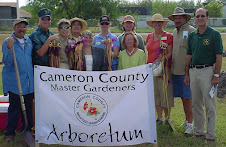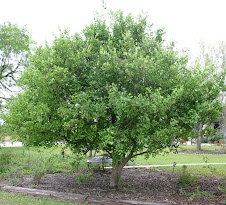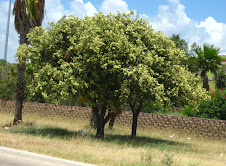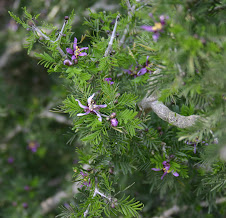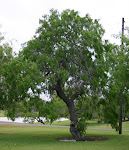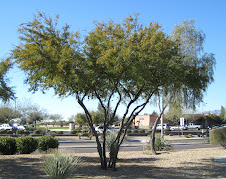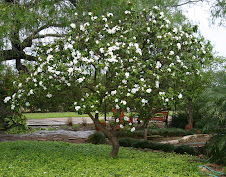 Walt had already constructed the two sides with the slatted boards. It's pretty nifty how the angled boards keep your compost ingredients in the bin while allowing for some ventilation. If you are inexperienced with carpentry like I am, you can always make all four sides solid. Just drill a few holes in the boards. Walt connected his two pre-constructed sides with 4' fence boards. Not only did he end up with a compost bin that would look great in any yard, he kept these wooden boards out of the landfill!
Walt had already constructed the two sides with the slatted boards. It's pretty nifty how the angled boards keep your compost ingredients in the bin while allowing for some ventilation. If you are inexperienced with carpentry like I am, you can always make all four sides solid. Just drill a few holes in the boards. Walt connected his two pre-constructed sides with 4' fence boards. Not only did he end up with a compost bin that would look great in any yard, he kept these wooden boards out of the landfill!Thursday, October 23, 2008
Recycling Your Dolly & Ike Debris
Wood fences are very apt to be destroyed in the high winds of a hurricane. If you live in deep south Texas (Hurricane Dolly in July) or the Houston or Galveston area (Hurricane Ike in September), chances are you may have a stack of fence boards waiting for the refuse removers to pick up. Walt brought his to The Arboretum yesterday and made this nifty compost bin! It is a 4 foot cube. Walt had already constructed the two sides with the slatted boards. It's pretty nifty how the angled boards keep your compost ingredients in the bin while allowing for some ventilation. If you are inexperienced with carpentry like I am, you can always make all four sides solid. Just drill a few holes in the boards. Walt connected his two pre-constructed sides with 4' fence boards. Not only did he end up with a compost bin that would look great in any yard, he kept these wooden boards out of the landfill!
Walt had already constructed the two sides with the slatted boards. It's pretty nifty how the angled boards keep your compost ingredients in the bin while allowing for some ventilation. If you are inexperienced with carpentry like I am, you can always make all four sides solid. Just drill a few holes in the boards. Walt connected his two pre-constructed sides with 4' fence boards. Not only did he end up with a compost bin that would look great in any yard, he kept these wooden boards out of the landfill!
 Walt had already constructed the two sides with the slatted boards. It's pretty nifty how the angled boards keep your compost ingredients in the bin while allowing for some ventilation. If you are inexperienced with carpentry like I am, you can always make all four sides solid. Just drill a few holes in the boards. Walt connected his two pre-constructed sides with 4' fence boards. Not only did he end up with a compost bin that would look great in any yard, he kept these wooden boards out of the landfill!
Walt had already constructed the two sides with the slatted boards. It's pretty nifty how the angled boards keep your compost ingredients in the bin while allowing for some ventilation. If you are inexperienced with carpentry like I am, you can always make all four sides solid. Just drill a few holes in the boards. Walt connected his two pre-constructed sides with 4' fence boards. Not only did he end up with a compost bin that would look great in any yard, he kept these wooden boards out of the landfill!Friday, October 3, 2008
Composting - It Ain't Rocket Science
We began setting up a few of the compost bins for the educational programs (and to enrich our garden). The one in the foreground is one distributed by many Valley cities a few years ago. It is an open plastic mesh bin. It is not real firm, but once it has some been filled, it will stand on its own. We attached it to some step-on fence posts to stabilize it.  Behind the plastic bin, you see a simple open bin made out of a stiff wire fencing. It took less than 10 minutes to build and the supplies cost less than $27. You will need about 12 feet of 36" wide wire fencing, 4 or 5 zip ties (or wire or twine to close the ends) and 3 or 4 posts. This is easiest made with two or three persons. Be sure to wear heavy gloves when working with this wire fencing. Unroll the wire fencing upside down on level ground and walk on it to flatten it out. Form the fencing into a circle. Connect the ends with wire, twine or zip ties. To keep it from blowing around in our high winds, attach it to the fence posts.
Behind the plastic bin, you see a simple open bin made out of a stiff wire fencing. It took less than 10 minutes to build and the supplies cost less than $27. You will need about 12 feet of 36" wide wire fencing, 4 or 5 zip ties (or wire or twine to close the ends) and 3 or 4 posts. This is easiest made with two or three persons. Be sure to wear heavy gloves when working with this wire fencing. Unroll the wire fencing upside down on level ground and walk on it to flatten it out. Form the fencing into a circle. Connect the ends with wire, twine or zip ties. To keep it from blowing around in our high winds, attach it to the fence posts.

The bin we are assembling at the left is a 170 gallon plastic pre-fab bin . It is made from 100% recycled materials and required no tools for assembly. We purchased it online from The Home Depot and it arrived in five days. This company also makes a smaller 90 gallon version.
Lining up the panels took a minimum of 2 persons - and the final panel was totally a group effort! (see the picture below)
It has a lid and is sturdy. The one downside is moving it around in the garden. You have to be very careful or it will fall apart on you and then you're back at square one lining up the panels.

 And now we begin the compost pile! Everyone brought raw materials from home - grass clippings, shredded paper, kitchen waste, dried ebony leaves, garden trimmings and small twigs. Roger demonstrated the building of a compost pile and discussed what goes in and what should stay out! We also discussed the 30:1 carbon:nitrogen ratio.
And now we begin the compost pile! Everyone brought raw materials from home - grass clippings, shredded paper, kitchen waste, dried ebony leaves, garden trimmings and small twigs. Roger demonstrated the building of a compost pile and discussed what goes in and what should stay out! We also discussed the 30:1 carbon:nitrogen ratio.
 Debbie got the award for the "Best Composting Attire" - and we all yearned for her mosquito netting since we are still dealing with our post Hurricane Dolly mosquitoes.
Debbie got the award for the "Best Composting Attire" - and we all yearned for her mosquito netting since we are still dealing with our post Hurricane Dolly mosquitoes.
 Behind the plastic bin, you see a simple open bin made out of a stiff wire fencing. It took less than 10 minutes to build and the supplies cost less than $27. You will need about 12 feet of 36" wide wire fencing, 4 or 5 zip ties (or wire or twine to close the ends) and 3 or 4 posts. This is easiest made with two or three persons. Be sure to wear heavy gloves when working with this wire fencing. Unroll the wire fencing upside down on level ground and walk on it to flatten it out. Form the fencing into a circle. Connect the ends with wire, twine or zip ties. To keep it from blowing around in our high winds, attach it to the fence posts.
Behind the plastic bin, you see a simple open bin made out of a stiff wire fencing. It took less than 10 minutes to build and the supplies cost less than $27. You will need about 12 feet of 36" wide wire fencing, 4 or 5 zip ties (or wire or twine to close the ends) and 3 or 4 posts. This is easiest made with two or three persons. Be sure to wear heavy gloves when working with this wire fencing. Unroll the wire fencing upside down on level ground and walk on it to flatten it out. Form the fencing into a circle. Connect the ends with wire, twine or zip ties. To keep it from blowing around in our high winds, attach it to the fence posts.
The bin we are assembling at the left is a 170 gallon plastic pre-fab bin . It is made from 100% recycled materials and required no tools for assembly. We purchased it online from The Home Depot and it arrived in five days. This company also makes a smaller 90 gallon version.
Lining up the panels took a minimum of 2 persons - and the final panel was totally a group effort! (see the picture below)
It has a lid and is sturdy. The one downside is moving it around in the garden. You have to be very careful or it will fall apart on you and then you're back at square one lining up the panels.

 And now we begin the compost pile! Everyone brought raw materials from home - grass clippings, shredded paper, kitchen waste, dried ebony leaves, garden trimmings and small twigs. Roger demonstrated the building of a compost pile and discussed what goes in and what should stay out! We also discussed the 30:1 carbon:nitrogen ratio.
And now we begin the compost pile! Everyone brought raw materials from home - grass clippings, shredded paper, kitchen waste, dried ebony leaves, garden trimmings and small twigs. Roger demonstrated the building of a compost pile and discussed what goes in and what should stay out! We also discussed the 30:1 carbon:nitrogen ratio. Debbie got the award for the "Best Composting Attire" - and we all yearned for her mosquito netting since we are still dealing with our post Hurricane Dolly mosquitoes.
Debbie got the award for the "Best Composting Attire" - and we all yearned for her mosquito netting since we are still dealing with our post Hurricane Dolly mosquitoes.
Wednesday, October 1, 2008
Construction begins on Outdoor Classroom
 It looks like things will get worse before they get better - at least when it comes to the looks of the Compost Demonstration Site. But how exciting to see dirt moving equipment in The Arboretum this morning! The footprint of the slab was moved back a bit from the original plan - so we'll have to move one of the Cedar Elms, Ulmus crassifolia. The Compost Education Committee is working diligently on the presentations to be given here.
It looks like things will get worse before they get better - at least when it comes to the looks of the Compost Demonstration Site. But how exciting to see dirt moving equipment in The Arboretum this morning! The footprint of the slab was moved back a bit from the original plan - so we'll have to move one of the Cedar Elms, Ulmus crassifolia. The Compost Education Committee is working diligently on the presentations to be given here.
Subscribe to:
Posts (Atom)

